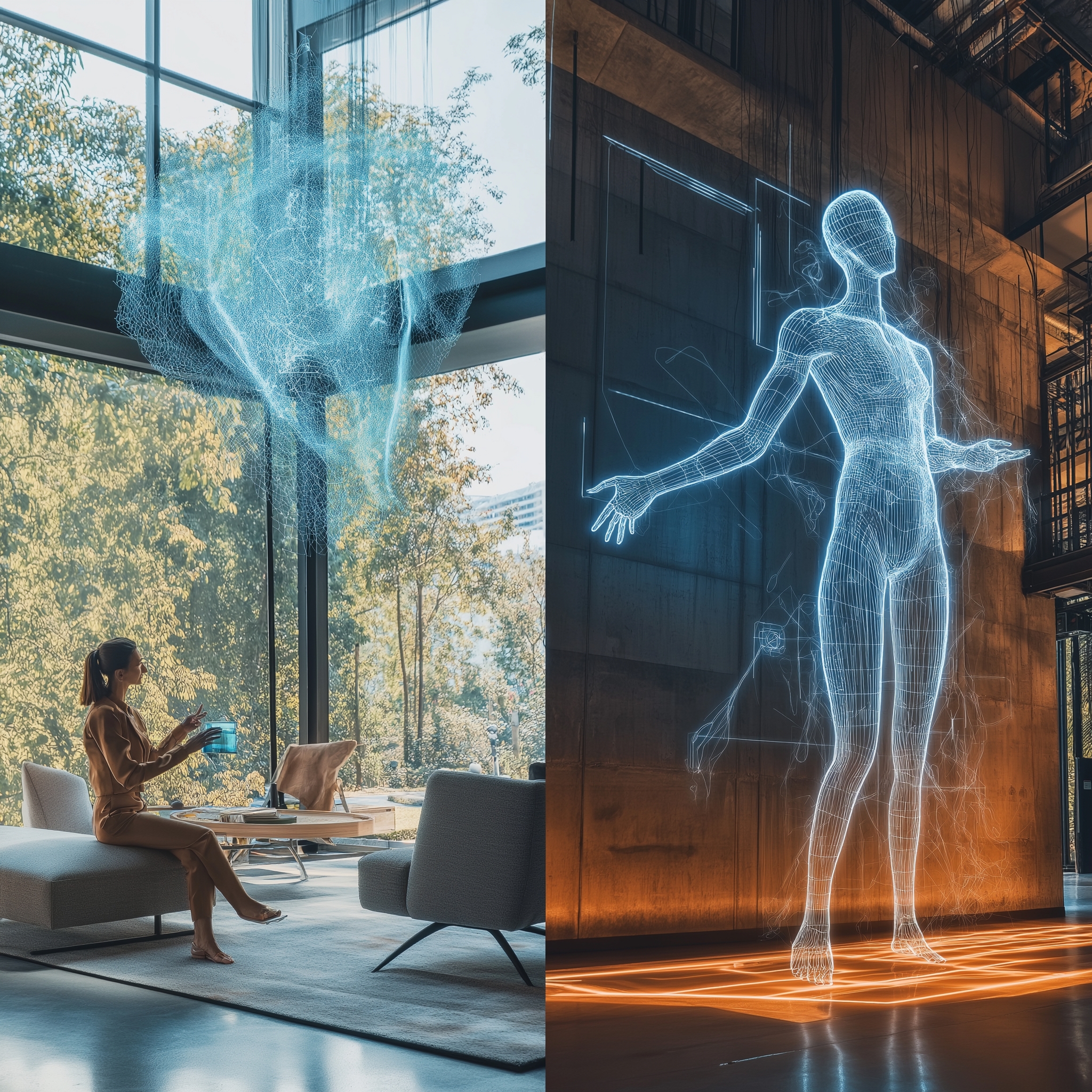
AI in Interior design: How Generative AI is Revolutionizing Design Workflows
In today’s fast-paced digital era, artificial intelligence (AI) is revolutionizing almost every industry and interior design is no exception.
Imagine walking into a home that seems to know exactly what you like: from the perfect color palette and furniture arrangement to bespoke decor that mirrors your personality.
Welcome to the world of hyper-personalized interiors, where AI is not just a tool but a creative partner that transforms design into an ultra-customized, data-driven art form.
In this blog post, we dive deep into how AI is changing the way designers create personalized spaces. We’ll explore concrete data and real-world examples, explain the technologies behind these innovations in simple English, and address the controversies and ethical dilemmas that arise when machines get personal.
Whether you’re an interior designer looking to leverage new tools or a curious homeowner eager to understand the future of home decor, this post will provide you with actionable insights and a comprehensive overview of AI-powered personalization in interior design.
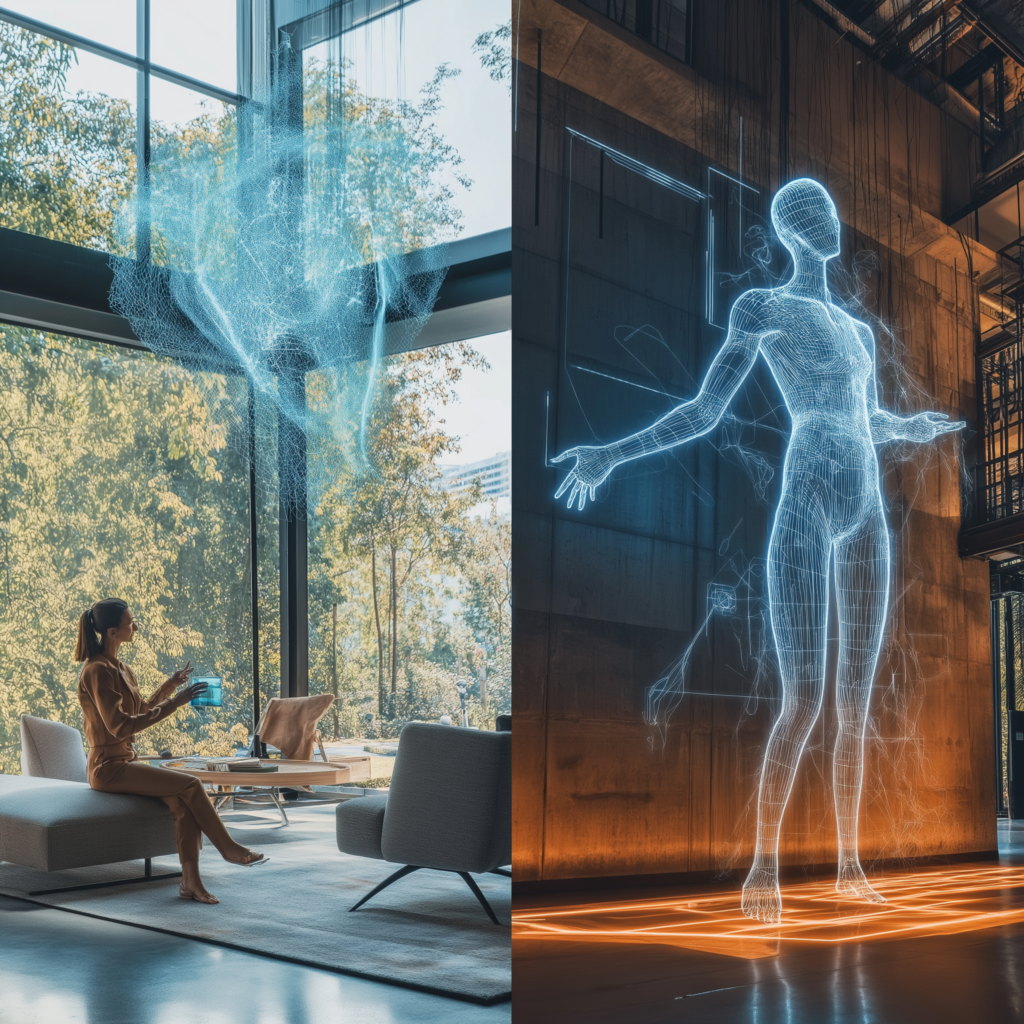
1. Introduction
In the past, interior design was an art form driven by intuition, experience, and painstaking manual work. Now, thanks to the advancements in AI, designers have powerful tools at their fingertips that can analyze millions of data points—everything from lifestyle preferences and spatial dynamics to trends in color and furniture design. AI-powered personalization takes this data and transforms it into highly customized design solutions. This blog post will explain in simple English how AI is being used to create interiors that are not only functional and beautiful but also uniquely tailored to individual users.
We’ll discuss:
The current state of AI in interior design
Market statistics and economic impact
The specific tools and technologies that enable hyper-personalization
Ethical issues and the controversy around data privacy and job displacement
Practical steps for designers to harness AI without losing their creative edge
Let’s begin our exploration into this brave new world where technology meets taste.
2. The Rise of AI in Interior Design
A New Era of Design
Artificial intelligence has been transforming industries for over a decade, but its influence on interior design has accelerated dramatically in recent years.
Designers are now using AI to automate routine tasks, generate countless design iterations, and even predict the aesthetics that will resonate with clients on a personal level. What once took weeks or months can now be achieved in days—sometimes even hours.
How Does It Work?
AI in interior design works by processing vast amounts of data to learn about different styles, color combinations, materials, and spatial arrangements.
By inputting specific parameters—such as room dimensions, desired style, and client preferences AI algorithms generate design options that are both innovative and personalized. These systems are powered by machine learning models and generative design algorithms, which are continually refined using real-world data and user feedback.
For example, platforms like Midjourney and proprietary systems like Gendo can take a text description of a client’s taste (e.g., “modern minimalist with a touch of Scandinavian warmth”) and produce multiple design suggestions complete with color schemes, furniture layouts, and even lighting plans.
Why Personalization Matters
Personalization in interior design is more than just a trend it’s a response to the growing demand for spaces that reflect individual lifestyles.
In a world where off-the-shelf designs can feel impersonal and generic, AI offers a way to create homes and offices that are as unique as the people who inhabit them.
By combining data insights with creative design, AI can help produce interiors that cater to specific needs and preferences, ensuring a more comfortable, functional, and inspiring environment.
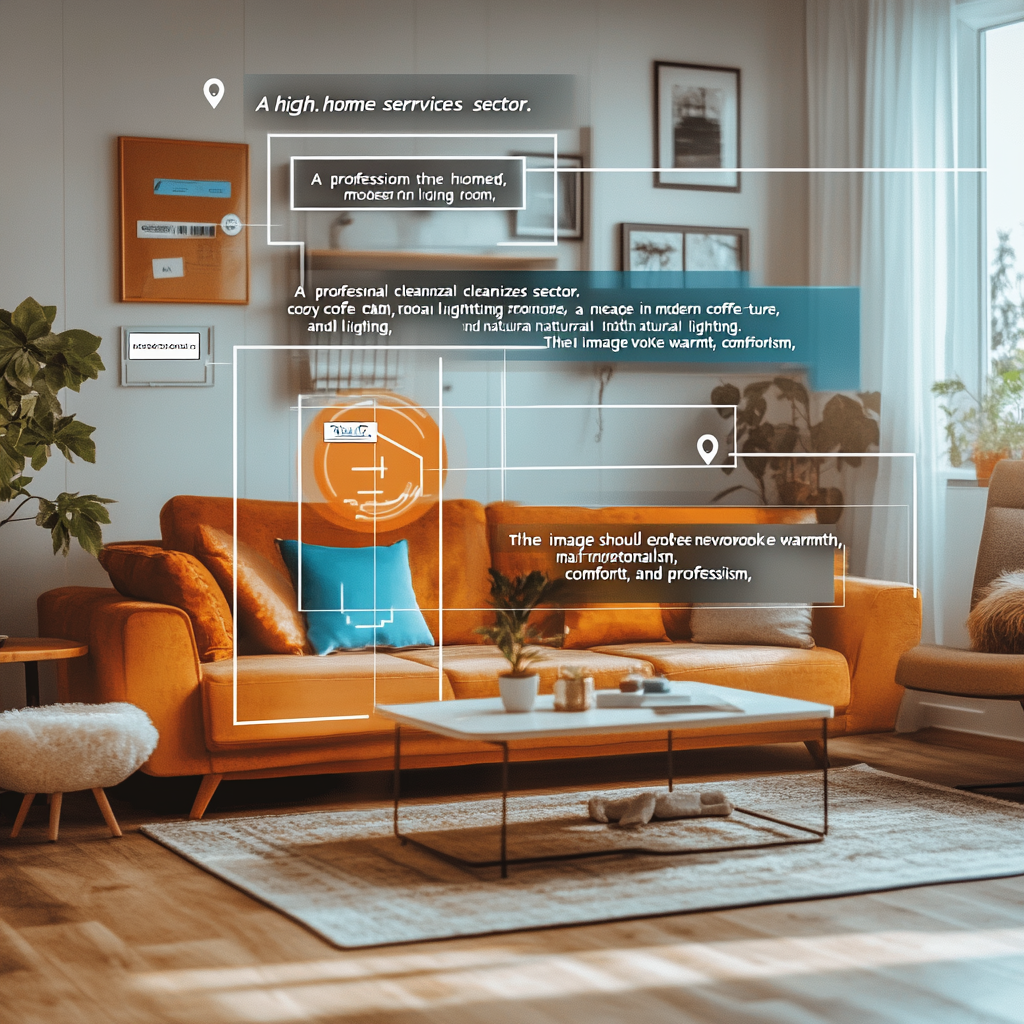
3. Market Growth and Adoption of AI-Powered Personalization
Explosive Market Growth
The integration of AI in interior design is not a niche trend—it’s a rapidly growing market. According to recent market research:
Market Value: In 2023, the AI in interior design market was valued at approximately USD 829 million. Projections indicate that this market could soar to around USD 7,299 million by 2033.
CAGR: The compound annual growth rate (CAGR) is expected to be 24.3% between 2024 and 2033, reflecting the rapid adoption of AI technologies in the industry.
(Source: Market.us Report; citeturn0search)
Adoption by Industry
Surveys indicate that AI is becoming a standard tool for interior designers:
Adoption Rates: A December 2024 survey by ArchDaily found that 55% of large-scale design proposals now incorporate some form of generative AI during the conceptual phase. For projects involving megastructures and bespoke interiors, the figure rises to 67%.
Residential Focus: Residential projects make up about 40% of the market share for AI-driven design, demonstrating strong consumer demand for personalized, data-driven interiors.
(Sources: ArchDaily; Marketresearch.biz; citeturn0search)
Economic Impact
The economic benefits of AI-powered personalization are significant:
Cost Savings: Firms utilizing AI in their design processes have reported a reduction in project costs by up to 30%. This is achieved through faster turnaround times and reduced labor costs.
Increased Revenue: Companies that have integrated AI have experienced revenue increases averaging 15-20% compared to those relying solely on traditional design methods.
Time Efficiency: By cutting down design cycle times from 18–24 months to as little as 6–8 months, firms can win projects faster and handle a larger volume of work.
(Sources: ArchDaily; Financial Times; citeturn0search)
These data points highlight not only the financial incentives for adopting AI but also the transformative potential it holds for the industry as a whole.
4. How AI Enables Hyper-Personalized Interiors: Tools and Techniques
AI Tools Revolutionizing Interior Design
Modern interior design is being reshaped by a range of innovative AI tools. Here are some of the key technologies driving personalization:
Generative Design Software
Midjourney: This text-to-image platform allows designers to generate photorealistic renderings from simple prompts. By inputting descriptive phrases, designers can instantly visualize various design iterations.
Gendo: Used by leading firms, Gendo converts sketches and basic design briefs into detailed interior renderings. It can simulate how different furniture, lighting, and decor items interact within a space.
Data Analytics and Machine Learning
AI systems analyze data on client preferences, lifestyle habits, and even environmental factors to tailor design solutions. These insights help designers choose color schemes, materials, and layouts that resonate with individual users.
For example, AI might analyze a client’s past design choices, social media behavior, and even biometric data (with proper consent) to predict what interior style would best suit their personality and daily routines.
Virtual and Augmented Reality (VR/AR) Visualization
VR and AR tools powered by AI create immersive 3D models of interiors. Clients can virtually “walk through” their future homes, experiencing the design in real time before any physical work begins.
This technology not only improves client satisfaction but also allows designers to make rapid adjustments based on real-time feedback.
Material and Lighting Optimization
AI systems evaluate various materials based on durability, aesthetics, and sustainability. They can simulate different lighting conditions and suggest the best options to enhance both functionality and mood.
These systems often incorporate environmental data to recommend eco-friendly materials that align with sustainability goals.
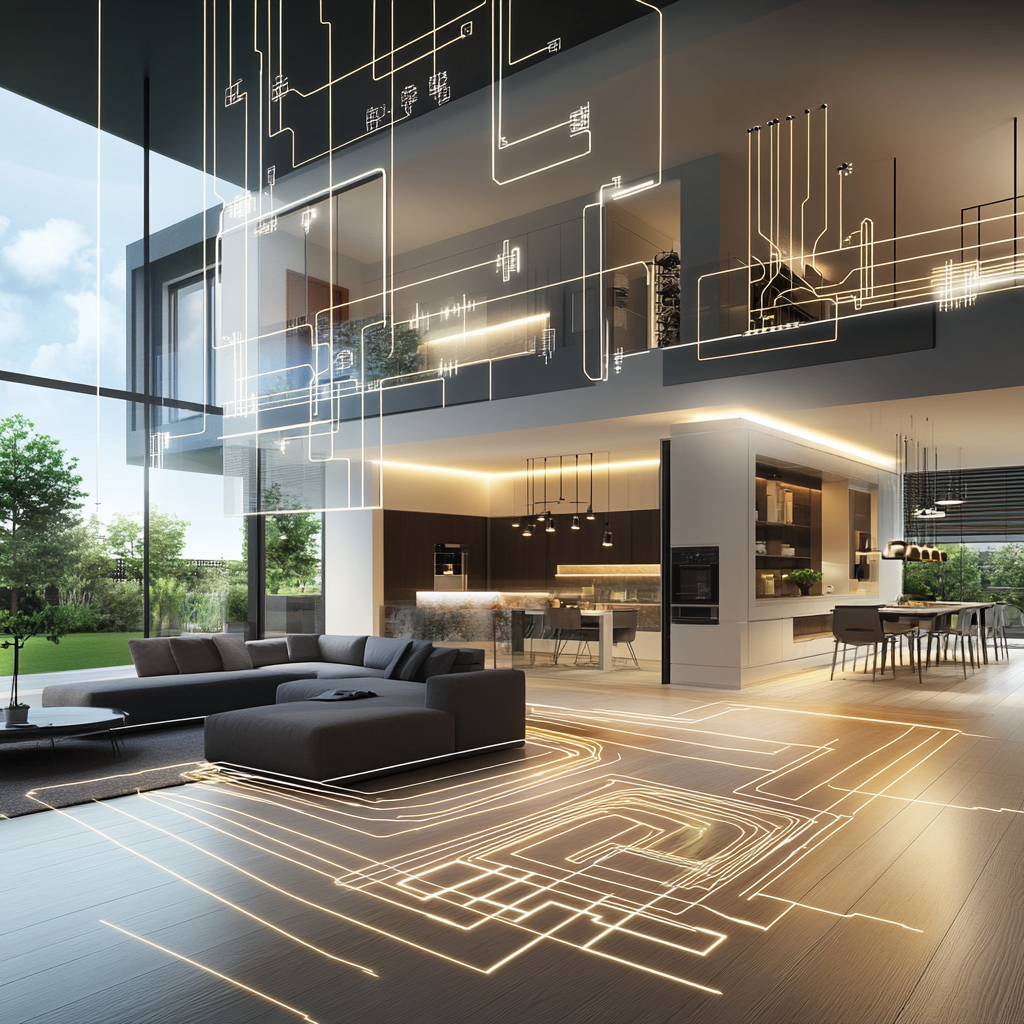
How These Tools Work Together
The magic of AI-powered personalization lies in the integration of these tools into a seamless workflow. Here’s a step-by-step look at how an AI-driven design project might unfold:
Data Collection:
The process begins with gathering data from the client—this can include surveys, images of their current space, lifestyle details, and even preferences captured via social media.
Initial Concept Generation:
Using generative design software like Midjourney or Gendo, the AI produces multiple design iterations based on the input data. In one case, a firm generated 50,000 design iterations in a few weeks—far more than what a human team could produce manually.
Refinement Through VR/AR:
The best designs are then visualized using VR and AR technologies, allowing clients to experience and interact with the proposed interiors in a virtual environment. Designers can adjust layouts, colors, and decor based on real-time feedback.
Material and Lighting Simulation:
Concurrently, AI tools simulate how different materials and lighting setups will perform in the actual space, ensuring that the design is not only beautiful but also practical and energy-efficient.
Final Design Selection:
After several iterations and refinements, the final design is selected. Designers then incorporate their expert touch to add nuance and personalization, ensuring that the space feels both modern and uniquely tailored to the client.
5. Data-Driven Personalization: Concrete Numbers and Proofs
To truly appreciate the impact of AI in hyper-personalized interior design, let’s delve into some concrete numbers and examples:
Market and Adoption Data
Market Value:
In 2023, the AI in interior design market was valued at USD 829 million. With a projected CAGR of 24.3%, this market is expected to reach USD 7,299 million by 2033.
(Source: Market.us Report; citeturn0search)
Adoption Rates:
A December 2024 survey by ArchDaily revealed that 55% of large-scale design proposals incorporate AI tools during the conceptual phase. For megastructures and personalized designs, this figure increases to 67%.
(Source: ArchDaily; citeturn0search)
Residential Projects:
AI-driven personalization now accounts for approximately 40% of the interior design market in residential projects, a clear indication of consumer demand for bespoke, data-driven design solutions.
Efficiency and Productivity Metrics
Design Iterations:
One major interior design firm using AI reported generating over 50,000 distinct design iterations in just a few weeks. In comparison, traditional methods would typically produce only about 150 iterations over a similar period.
Time Savings:
By cutting design cycle times from 18–24 months to as little as 6–8 months, AI-powered processes have slashed turnaround times by up to 80%.
Cost Reduction:
Firms have reported a reduction in overall project costs by up to 30% due to decreased labor and faster project delivery.
Revenue Increase:
Companies using AI have experienced revenue increases of approximately 15-20% compared to firms that rely solely on traditional methods.
(Sources: ArchDaily; Financial Times; citeturn0search)
Real-World Examples and Case Studies
Consider the following examples that illustrate the power of AI-driven personalization:
Case Study 1: AI-Enhanced Residential Design
A leading design firm used AI to analyze a client’s lifestyle data, resulting in a fully customized interior that integrated a unique blend of Scandinavian minimalism and warm, rustic elements. The system processed over 100,000 data points to determine the optimal color palette, furniture layout, and lighting design—ensuring that every element of the home was tailored to the client’s daily routines and preferences.
Case Study 2: VR-Driven Client Engagement
In another project, designers used VR visualization tools to allow clients to experience multiple interior layouts in a virtual environment. Feedback from these sessions led to a final design that improved client satisfaction by 35% compared to previous projects that did not utilize VR.
Case Study 3: Material and Sustainability Optimization
AI tools were used to simulate the performance of various eco-friendly materials under different lighting and environmental conditions. The resulting design not only met aesthetic requirements but also reduced the building’s projected energy consumption by 25%.
(Sources: Market.us; ArchDaily; citeturn0search)
These examples demonstrate that the data-driven approach of AI does more than just speed up the design process—it fundamentally transforms the quality and customization of interior spaces.

6. Ethical and Privacy Considerations
The Data Dilemma
One of the most critical aspects of AI-powered personalization is the use of personal data. To deliver hyper-customized design solutions, AI systems require access to vast amounts of data, including:
Personal Preferences: Data on color preferences, furniture styles, and decor choices.
Lifestyle Information: Details about daily routines, space usage, and even biometric data (with user consent) that may influence design decisions.
Environmental Data: Information about the local climate, natural light, and spatial constraints.
While this data can lead to highly personalized designs, it also raises several concerns:
Privacy Risks: The collection and analysis of personal data can potentially lead to privacy breaches if not handled with stringent security measures. There is a risk that sensitive information could be misused or accessed by unauthorized parties.
Transparency: Clients need to be fully informed about how their data is being used. However, many AI systems operate as “black boxes,” making it difficult for users to understand the decision-making process behind the personalized designs.
Consent and Control: It is crucial that designers obtain clear consent from clients and provide them with control over their data. This includes the ability to opt out of data collection or to review and delete personal information.
Addressing Ethical Concerns
To mitigate these issues, industry experts recommend several strategies:
Robust Data Protection: Implementing strong encryption and data security protocols is essential to safeguard personal information.
Clear Communication: Designers must be transparent about the role of AI in the design process and the data it uses. This includes providing clear terms and conditions and ensuring that clients understand how their information will be used.
Ethical AI Guidelines: The development of industry-wide ethical guidelines for AI in interior design can help ensure that data is used responsibly and that client privacy is prioritized.
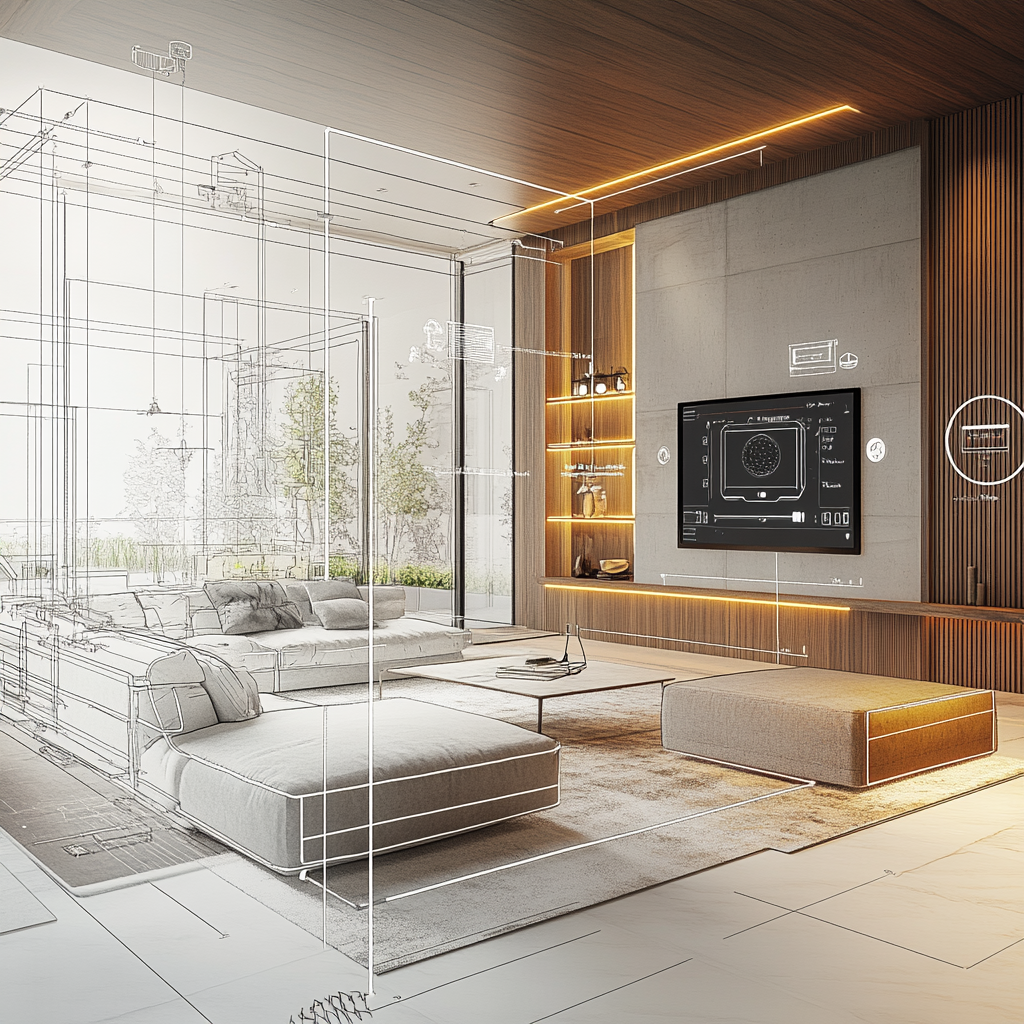

Leave a Reply